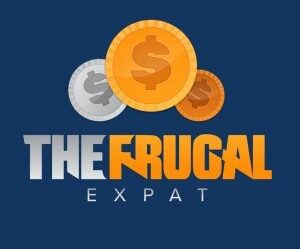Retiring means no more work, and your investments should provide the cash needed to live a fruitful fun-filled life. Many retirees seek out dividend stocks to gain some extra money on the side.
Dividend stocks can yield 2%-4% on most, and you will usually get paid quarterly. It is suitable for people to know they will have some cash in the form of dividends come in without having to sell any shares.
These three dividend ETFs will be the best dividend ETFs on the market. They are also extraordinary dividend ETFs for retirees to add to their portfolios. They have excellent yields, stability, and even since capital appreciation. You cannot go wrong with those three factors.
SCHD: Schwab Equity Dividend ETF
SCHD is one of the best dividend growth ETFs on the market. It tracks the Dow Jones Industrial Dividend 100 Index. It has a history of raising its dividend every year, with over a 10% growth rate over the last ten years, which is good news for the retiree. You will know that the dividend will continue to grow year after year.
SCHD has an expense ratio of 0.06%, which means it will cost $6 for every $10,000 invested. For many mutual funds, that is a very low-cost expense ratio for high performance and yield.
SCHD and VOO are great ETFs to hold in your portfolio, but SCHD has a much higher yield. The yield is 3.59%, much higher than many dividend stocks, and the overall performance is very similar to the S&P 500 of 12.22% average in the last ten years. That is excellent news for the retiree.
If you are worried about what stocks it is comprised of, the top ten stocks include Pepsico, Coke Cola, Home Depot, Verizon, and Texas Instruments. These are all great value companies, which will allow this ETF to be stable through the ups and down years. It had a performance of -3.23% in 2022, while the S&P 500 had a performance of -18.17%.
SCHD is hard to beat for a retirement portfolio.
VYM: Vanguard High Yield Dividend ETF
VYM is another great ETF on the market, making its way into many retirees' portfolios. It tracks the FTSE® High Dividend Yield Index, comprised of 465 different stocks. VYM seeks to create a portfolio full of high-yielding dividend-paying companies.
VYM and SCHD are very similar in expense ratios, with both having 0.06%, and VYM has a dividend yield of 3.06%, making it on par with many individual dividend stocks. It also has an average performance of 10.15% over the last ten years, making a great fund that will continue to grow in the long term, increasing your wealth.
The top ten assets it holds are all stable companies like Home Depot, Pepsico, AbbVie, and Exxon Mobil Corp. They help to keep this fund stable through the ups and downs of the market while providing an excellent yield for investors.
SPHD: Invesco S&P 500 High Div Low Volatility ETF
SPHD is another great dividend ETF for retirees to add to their portfolios. It allows high dividends with low volatility. It tracks the S&P 500 Low Volatility High Dividend Index (Index), which tracks about 50 different low-volatility stocks in the S&P 500.
SPHD has a much higher expense ratio of 0.30% but makes it up with a much higher yield of 4.54%. That higher yield should be an excellent factor for those retirees looking for income. Many dividend stocks have yields closer to 3%, so having yields higher than 4% is good news.
The fund's performance over the last ten years is 8.98% average, which is much lower than the S&P 500 of 12.24%, but for many retirees, capital appreciation is not the main factor. Yields and stability weigh heavier as you get older.
The companies in the top ten holdings are familiar companies like At&t, Verizon, Walgreens, and Simon Property Group. These stable companies produce good dividends, and you can own them all in one place.
Adding Dividend ETFs to Your Portfolio
Dividend ETFs come in all sizes and shapes. Some are high yielding, and some are high-growth, but the good thing is that you have more diversification within the fund, so if one company stops paying dividends, you will have other companies to replace them within the ETF. Simplicity is a good thing for retirees.

I’m Steve. I’m an English Teacher, traveler, and an avid outdoorsman. If you’d like to comment, ask a question, or simply say hi, leave me a message here, on Twitter (@thefrugalexpat1). Many of my posts have been written to help those in their journey to financial independence. I am on my journey, and as I learn more I hope to share more. And as always, thanks for reading The Frugal Expat.







